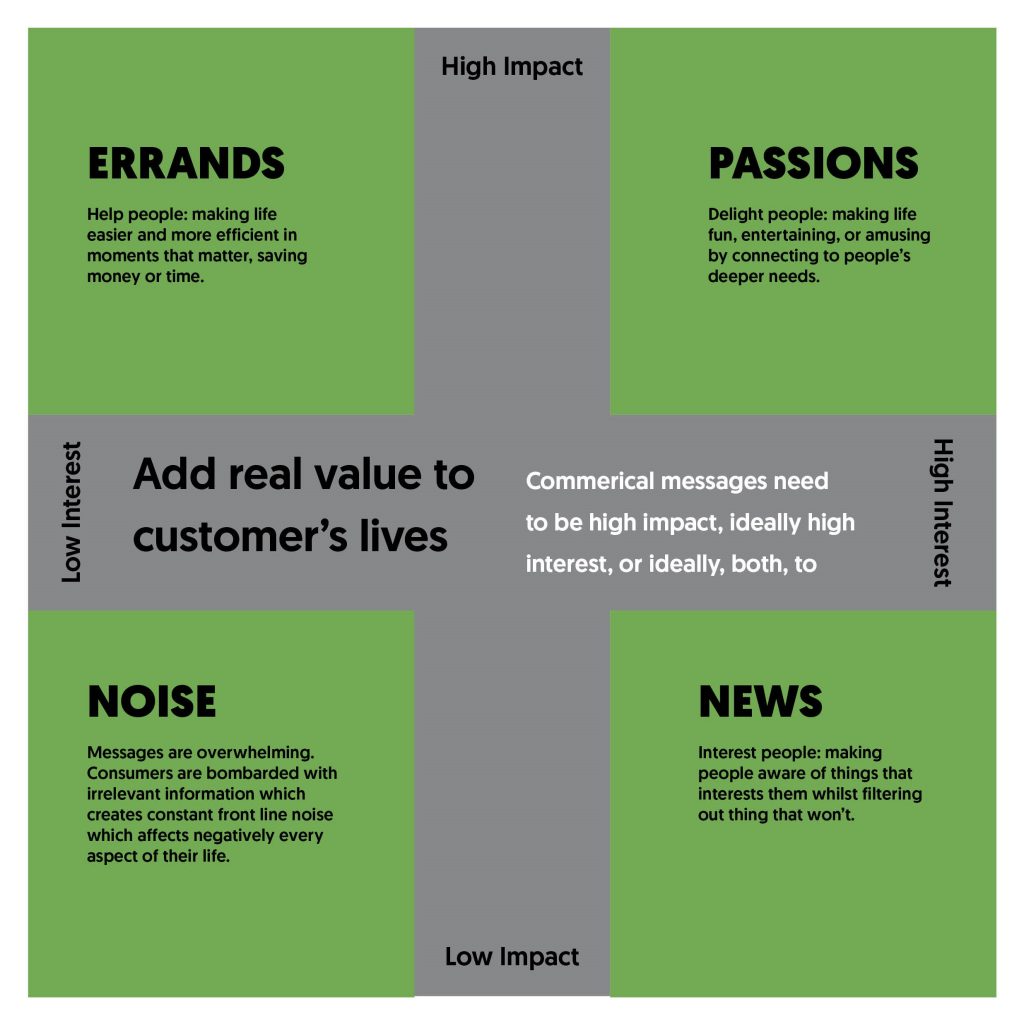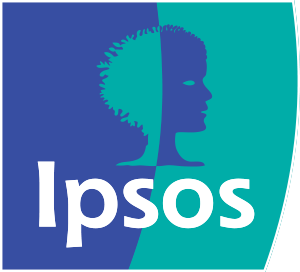Looking back on 2019 we can say that some of the most discussed voices of the year have been digital. Alexa, Siri, Cortana and Google Assistant have rapidly made their way into millions of homes, making 2019 a big year for voice technology.
New devices, updated software, advances in technology and additional skills have inspired predictions for a future dominated by voice, not screens. With more than 60% of British1 smartphone users using a voice assistant at least once a month, and 10% of UK households owning at least one smart speaker device2, it is easy to understand where the idea of a future without screens comes from.
But, voice technologies’ increasing popularity is not without its conflicts and barriers. For example, recent social media scandals and some bad publicity have increased audiences’ concerns about privacy. In addition to this some devices are fuelling consumer frustration by not being able to comprehend straight forward commands or regional accents. In some reported cases devices have even made purchases
without the owners knowledge or consent.
If voice is the future, this future seems uncertain
In this complex landscape, we collaborated with the Internet Advertising Bureau (IAB UK) to understand the potential future impact of voice technology beyond the hype. Our aim was to decode voice technology to help brands take advantage of the opportunities whilst minimising the risks.
Our programme of research included:
- Interviews with experts from different disciplines, including: neuroscientists, sound historians, futurologists, voice skills developers, PAs, and AI professors.
- Semiotics, projective techniques and discussion groups to get under the skin of people’s real lives and needs.
- Workshops with IAB members, media agencies, and advertisers to test their expectations and the real impact of Voice in the industry. This was crucial to the research, as 79% of media agency executives and advertisers believe it is important to reach audiences through voice activated devices3.
We found insights on three key myths about voice.
Myth 1: The future will be without screens
Smartphones have been around for more than 25 years and the relationship with our devices has inspired controversy, especially regarding their impact on our mental well being and social behaviours. Increased screen usage has been blamed for absorbing our attention and creating dependent and anxious behaviours.
It is increasingly true that we find it difficult to distract ourselves from our phones, with 75%4 of Britons agreeing that we are constantly looking at screens. Younger generations are affected most, those aged 15 to 24 spending on average four hours a day on the phone, compared with 2 hours 49 minutes for all adults5. It is, therefore, understandable that voice technology has been heralded as the cure for our screen addiction.
Unfortunately, our research showed that voice might not be the cure we hoped for.
Both experts and users seem sure that voice will be an additional way to control our devices rather than a replacement for screens. Voice will be used when it is the easiest and most effective way to complete an action. So, whilst voice might be the most convenient way to control the radio in your own home, a train full of people using voice technology on their morning commute could be too disruptive to compete with screens.
Now that many appliances (from microwaves to washing machines and light bulbs) are incorporating voice, the ideal consumer-focused design is a matter of trial and error. Is voice going to improve experience and usability or is it going to be one of these functionalities consumers rarely make use of? Only time and experience will tell, but our research shows that voice is going to be one amongst many different interfaces and that it will be integrated in our behaviours only if they can enhance the overall experience.
Myth 2: Voice has already changed the game
When we talk about voice technology, we generally mean AI, and it is here where things get complicated.
AI is a term feeding and fed by our imagination. The average consumers’ expectations about what the AI powering their voice assistant can do are enhanced by science fiction and Hollywood, often making the experience of the device in reality, disappointing.
One of the first things that emerged from our discussions with AI experts is that AI might not be as smart as we think. Currently, it can do many things humans cannot (such as analysing big data in a heartbeat) but, it fails in other tasks that we can complete easily, such as understanding and interpreting context into conversation.
Talking and carrying on a conversation requires a complex set of skills which aren’t part of AI’s repertoire yet. That’s why the ‘brains’ of voice technology devices are predominantly based on pre-coded conversational architectures often tested between humans to script likely permutations of conversation.
When your customer is expecting to converse freely and easily with their device, managing expectations is one of the key challenges for voice technology.

Myth 3: Voice tech won’t take off due to privacy issues
When we talked with consumers, we were in the middle of negative publicity regarding privacy regulations on social media, so we naturally expected to find a strong opposition to a device which has been portrayed in the media as constantly listening. Luckily for voice tech, we were wrong!
Surprising insights came when we asked early adopters to create collages of possible utopian and dystopian futures of voice technology and analysed them through semiotics. This revealed some unexpected positions on privacy issues. Despite the fear of being spied on, consumers’ attitudes drastically change depending on the perceived benefit. Attitudes towards voice depend on the value exchange.
Consumers are happy to share some of their most private information with brands, if they believe they
are getting something worthwhile in exchange, such as messages and services that are of high impact
or interest to them. The relevancy of the interaction is key to overcoming privacy barriers and avoiding
becoming more noise in the user’s life. Providing they receive relevant reassurances, our users wanted to trust their voice assistant with a large amount of personal data, to receive a personalised service that intuitively caters to their needs.
People’s ideal relationship with voice
Considering these 3 myths, we began mapping out the ideal relationship a user could have with their voice assistant. It appears that the perfect voice assistant would play the part of the virtual butler, consumers are looking for the Alfred to their Batman. This virtual butler would fulfil many roles:
- Family doctor: knowing our physical and emotional needs
- Parent: knowing our tastes, needs, and behaviours
- Best friend: having a personality and knowing our deepest secrets while maintaining confidentiality
- Partner: teaming up with us to educate our children
- PA: helping with organisation and filtering content that is relevant and important to us
- Pet dog: loyally following commands and never protesting about its role
What does this mean for brands?
To successfully operate in voice technology, brands need to consider how they fit within the consumer’s desire for the perfect voice companion and the limitations of the technology. Focusing on the unique customer journey for their category, brands could better understand pain points and identify opportunities for voice technology that fit people’s needs.
Beyond forecasts and futuristic ideas of voice technology, we identified five areas to consider to help brands navigate the present voice landscape:
1. Voice Speaks Different ‘Languages’
At the moment, each operating system (e.g. Alexa or Siri) requires specific apps designed with specific variations. This means that the same app would need a different version for each OS. Furthermore, it is important to consider that each OS has different content approval requirements, especially for branded content, however, we are aware that companies have started working on a unified OS language.
Before thinking about creating a new app for voice, it is important to understand which OS and voice ecosystem is the most suitable for your content and your audience.
2. Voice has different personalities
Brands can find creative restrictions due to each specific OS persona. For example, creating a brand persona is incredibly important for Actions on Google Assistant, but not so much for Skills on Alexa. The Google Assistant acts like a telephone operator connecting the user to other people, each with their own voice and personality. Alexa, meanwhile has a persona of her own and your Skills are more like her learning new abilities. With Google you can (and must) create a persona that reflects your brand, but with Alexa you need to work with her pre-existing persona for your Skill to feel right.
Brands need to consider how relevant their voice persona would be and decide if it is more suitable to
work as an app instead.
3. It’s all about the value exchange
When does your brand fit into a consumers’ life? What benefits do they want to give your brand the space to operate in voice? Do consumers have clear and simple access to and control of the personal data they shared with you?
To succeed with advertising in voice, brands should carefully consider their permission to join users by understanding their journey and the value exchange.
4. Think about your SEO strategy
Currently, most voice enabled devices are affiliated with a search engine, which drives search results. Therefore, SEO strategy and optimising web presence is crucial for being recommended in the voice space. However, brands cannot simply translate their current SEO strategy to voice. They need to consider the differences between text and voice search and how voice algorithms work for winning or losing search engine recommendations and rankings races.
Adapting the SEO strategy to voice is key to be successful in the current voice landscape.
5. Voice can be subtle
Currently, the main voice operating systems do not allow pure advertisements. In addition, smart speakers require an upfront cost on hardware and consumers can be resistant to advertising on this platform. This means that a less direct approach could benefit your brand more than traditional advertising. A branded content approach is likely to fair better as the advertisers can set up a new value exchange by producing high quality and relevant content for their audience.
Podcasts, playlists, digital audio and branded content advertising can offer a fertile ground to build you brand’s voice strategy.
Some scientists predicted that by 2070 we will have super intelligent AI and at that point we will be able to have the virtual assistants depicted by sci-fi. Until then, as consumers, experts and media agencies seem to agree, voice must be seen to complement the users’ needs, rather than disrupt their experience with irrelevant content.
- MindMeld, 2016, http://blog.mindmeld.com/post/145381067263/mindmeld-inmary-meekers-2016-internet-trends
- YouGov, April 2018, https://www.techradar.com/news/yougov-poll-uksmart-speaker-ownership-has-doubledin-six-months
- DAX, March 2018
- www.ipsosglobaltrends.com
- https://www.ofcom.org.uk/about-ofcom/latest/features-and-news/decade-ofdigital-dependency

